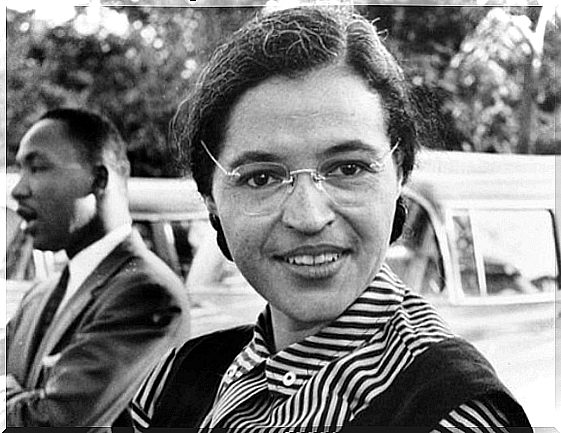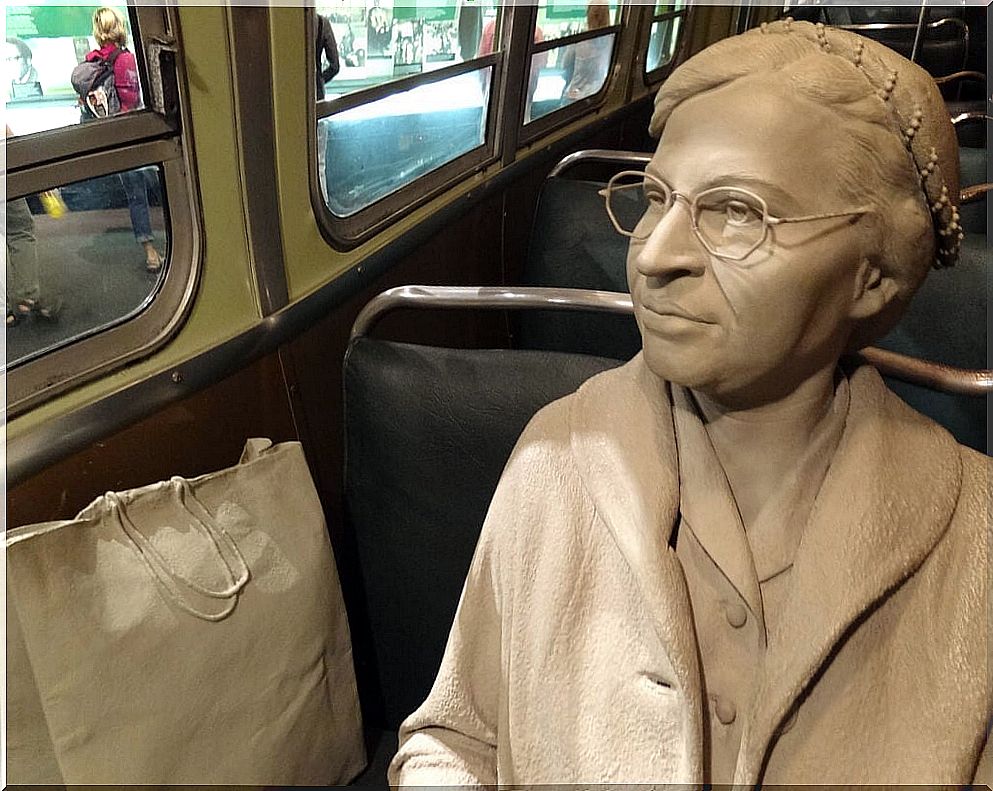Rosa Parks: A Lesson In Social Psychology

Rosa Parks was the woman who sparked one of the most important protests in the framework of the Civil Rights Movement of African Americans in the United States. And he did it with a simple, but powerful gesture. He refused to give up his bus seat to a white passenger.
She was arrested and jailed for it. This led to what would later become known as the Montgomery Bus Boycott. Encouraged by Martin Luther King, as an act of civil disobedience, these protests ended up abolishing the segregation laws.
The racial segregation law required African Americans to occupy the back seats on public buses. The front seats were reserved for whites. In the middle were some seats that could be used interchangeably. These seats were to always be yielded by African Americans to whites. The result of Rosa Parks’ refusal to give up her seat was the creation of the Civil Rights Act of 1964.
Who was Rosa Parks?
The daughter of a teacher and a carpenter, Rosa Parks lived during the age of racial segregation in the United States. She graduated from Alabama State Teachers College and married Raymond Parks. We place Rosa’s childhood in a context in which racial segregation was very marked: in public bathrooms, schools, transportation, restaurants, etc. Rosa would always remember her grandfather at her front door with a shotgun while the Ku Klux Klan marched down the street.
She and her husband joined the cause for the defense of the Scottsboro Boys, a group of black men falsely accused of raping a white woman. He also joined the NAACP, the National Association for the Advancement of Colored People. During her youth, Rosa worked at Maxwell Air Force Base. Maxwell was federal property and did not allow segregation. Rosa used to comment: “Maxwell opened my eyes.”

View of racism from psychology
Racism rests on the basis of the process of categorizing people. Characteristics of a certain group are attributed and it is also done from self-identification with another group that is considered superior. There are three main concepts in the analysis of racial discrimination and prejudice:
- Social categorization. It is the main precursor of all forms of prejudice. It is actually a cognitive tool that helps to classify and order reality. It does so through two cognitive processes: assimilation and differentiation. They are responsible for minimizing or exaggerating respectively the differences between different groups.
- The stereotype. It arises from social categorization.
- Social identification. The self-concept that a person creates derived from belonging to a certain group.
What leads a person to become a social activist?
Oppression and inequality are closely related. The factors that influence people to join social activism are mainly the perception of injustice due to belonging to a social group, inequality and social emotions.
Some psychosocial theories have tried to explain the Montgomery Bus Boycott phenomenon, but it seems that emotions best explain it (Ruiz-Junco 2013 and Bosco 2007). Shared emotions of humiliation develop in oppressed people along with other emotions such as courage and determination.
A. Jasper 2011, concluded that negative and positive emotions must occur at the same time in a person to become a social activist. Social activism would not exist only with negative emotions. Emotions play an essential role in identity and social behavior.

Rosa Parks, a social activist
Rosa Parks explained many times that that day she refused to get up and give her seat to a white passenger because she was “tired.” And it wasn’t just the physical exhaustion of that day coming home. Rosa was tired of being treated like a second-class citizen. I was tired of injustices and unequal treatment. In addition, courage and determination also motivated his social disobedience.
Rosa Parks worked the rest of her life in the fight for civil rights. It was the woman who got up sitting down. The woman who taught us that the world can be changed in one day and with a simple gesture. On the day of her death in 2005, all Montgomery buses ran with the front seats reserved with a black ribbon and a name: Rosa Parks.









